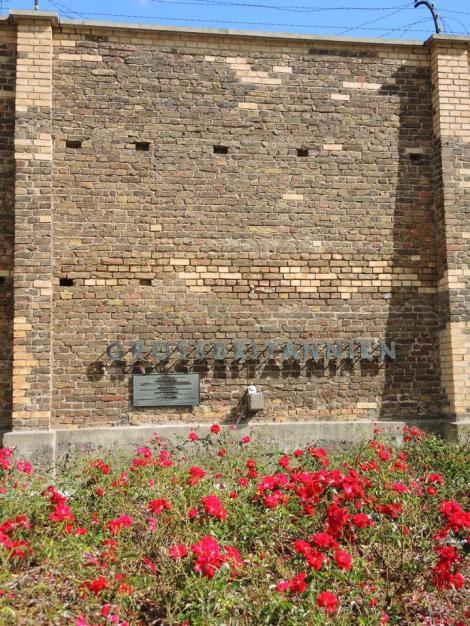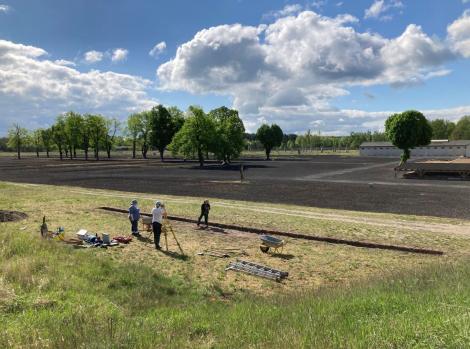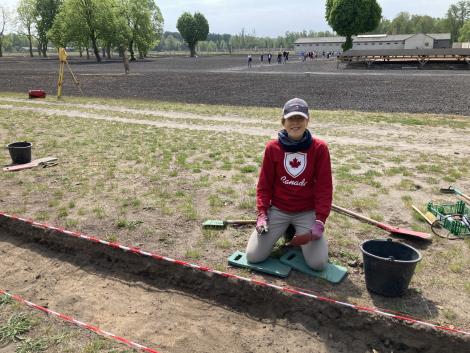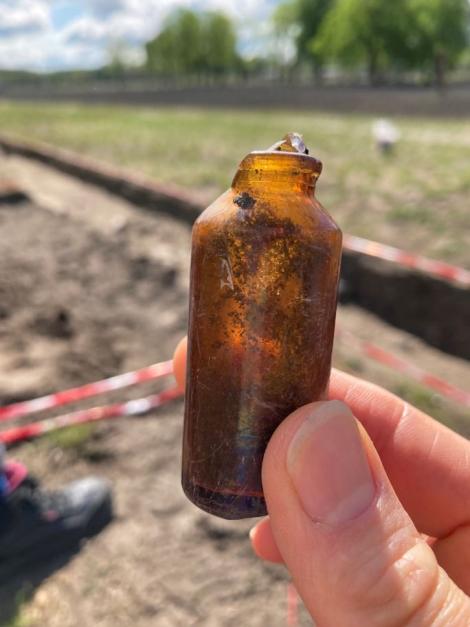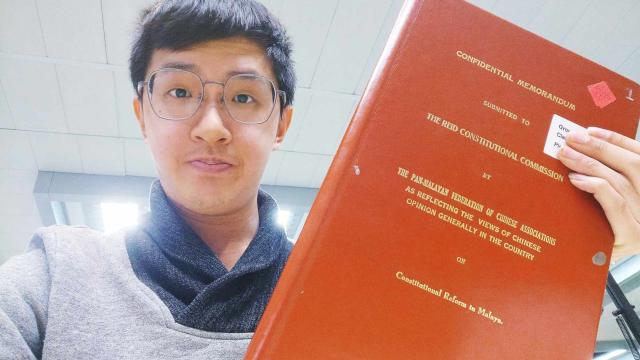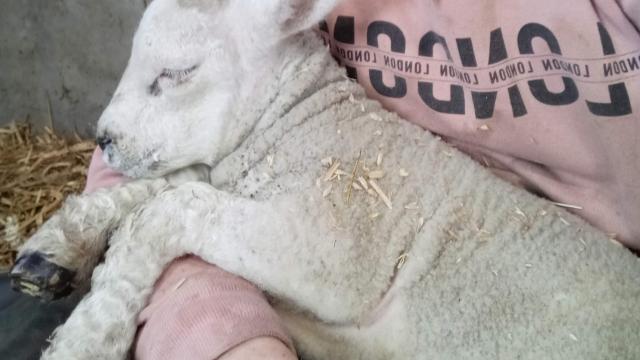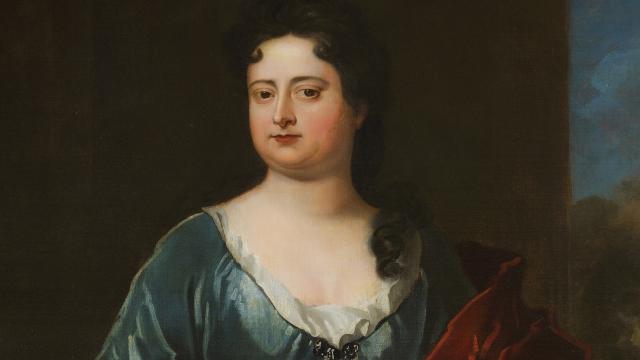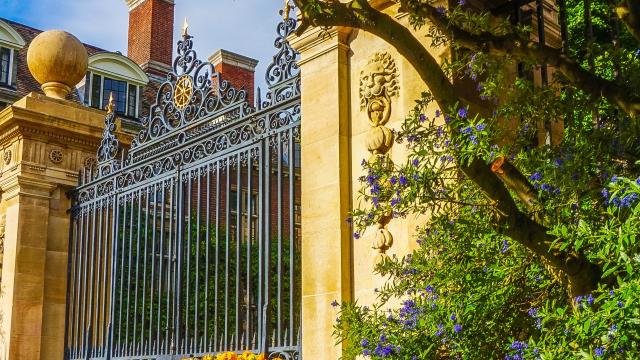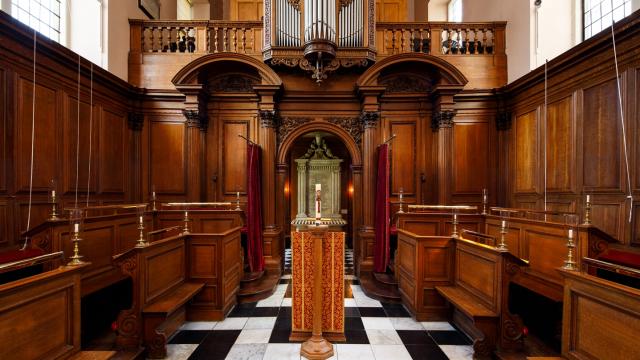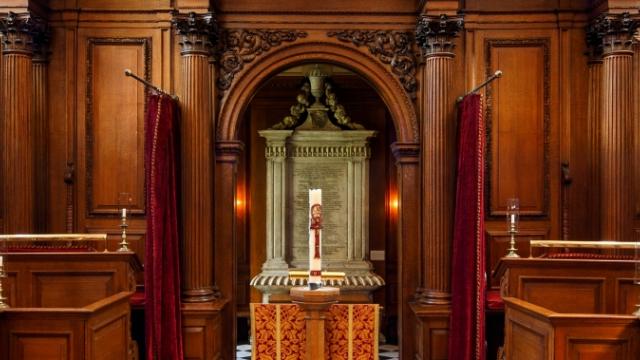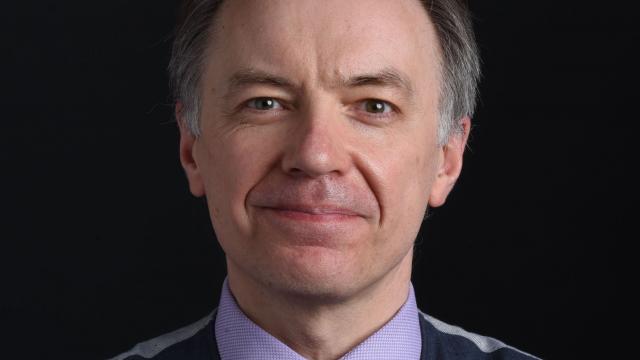
A Fellow of St Catharine’s has returned to Cambridge after co-leading a week-long archaeological excavation at Gedenkstätte Ravensbrück (the Ravensbrück Memorial), the site of the largest women’s concentration camp built by the Nazis in Germany. Dr Gilly Carr (2006), University Associate Professor and Academic Director in Archaeology, directed the project in partnership with Professor Claudia Theune of the University of Vienna, with the support of the Ravensbrück Memorial team and Brandenburgisches Landesamt für Denkmalpflege.
The Nazis and their allies ran more than 44,000 camps, ghettos, and other sites of detention, persecution, forced labour and murder during the Holocaust1. From spring 1939 until its liberation by the Russian army in 1945 (when it became an army camp), the Nazis imprisoned around 120,000 women and children, 20,000 men and 1,200 adolescent girls and young women at concentration camps at Ravensbrück. These prisoners came from over 30 nations, including Britain with three women arriving from the Channel Islands. From 1941 onward, Ravensbrück was also a place of execution and tens of thousands of people were murdered, died of hunger and disease, or were killed in medical experiments.
The project came about after Dr Carr first visited the Ravensbrück Memorial in 2019 when she was invited to speak about the interpretation of objects found at Nazi camps at an archaeological summer school for postgraduate students and other academics working on the materiality of Nazi camps. She explains:
“My visit in 2019 gave me the opportunity to discuss with the former director of the Ravensbrück Memorial the potential to carry out a future excavation, and which part of the former camp might be suitable for such work. The site is particularly interesting for me because of the large number of women who were imprisoned there, and I am intrigued by what archaeology might reveal about their experience. Once the dig was agreed with the new director of the Memorial and our project partners, I invited Professor Theune to join me as she is a leading expert on the excavation of concentration camps. We have also worked together before; she came to join me in Jersey in 2016 when I was excavating a forced labour camp.
“We were originally focused on the forced labour camp operated by Siemens & Halske during the Second World War. Our plans had to change late in the day when evidence emerged of unexploded ordinance across the site. Our attention then turned to another area that aerial photos indicated could be the location of an as yet unidentified building, which was a bit mysterious because, unlike many other buildings, there was no trace of it left on the surface and it was not mentioned – we don’t think – in prisoners’ testimonies.”
|
|
|
The excavation team led jointly by Dr Carr and Professor Theune included four students – two from each of their respective universities:
“The title of co-director for an archaeological project can be a bit misleading, as everyone has to work hard, regardless of their position on the dig! In reality, it is hands-on work and I really appreciated having a team to share the load. Together we dug a 20m by 80cm trench. For most of the dig, we largely found demolition debris (roof tiles, floor tiles, asbestos even) with only one small find in the form of a glass medicine bottle.
“You don’t need to dig very deep in order to find archaeology from this era, but on the last day we realised that our building was much deeper than anticipated. We managed to cut five slices across the main trench – each around 50–60cm deep – which revealed a large amount of corroded iron machinery in the middle of the trench. Among the finds was a name plate for a company in Rotterdam. Our next job is to delve into available archives to find out what machinery was being sold by that company. It has raised important questions about not only the purpose of this machinery, but also the nature of collaboration between civilian society in the Netherlands and the Nazis.”
Dr Carr is hoping to return to Ravensbrück Memorial to excavate the factory workshops and accommodation blocks at the Siemens camp together with her project partners.
|
|
|
1. United States’ Holocaust Memorial Museum. Encyclopedia of Camps and Ghettos, 1933–1945. Available online: https://www.ushmm.org/research/publications/encyclopedia-camps-ghettos
